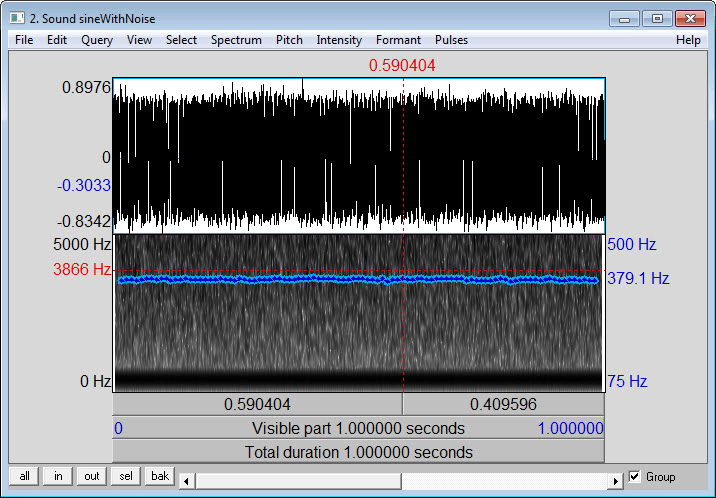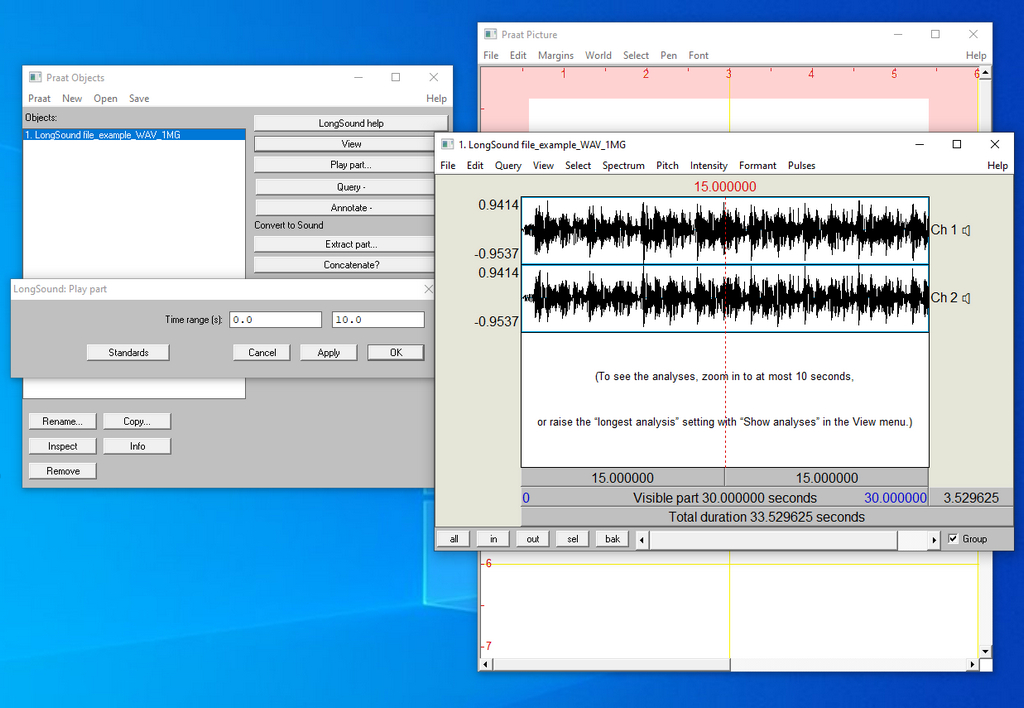
From the main window, choose "New" from the window, then "Record mono sound". Make sure you have a microphone hooked up to your computer. You don't need the picture window, so close it. You'll see three windows: a title window that disappears right away, the main "objects" window (where most of the work gets done), and a "picture" window for drawing fancy printable diagrams. One word should use the frame, the second the frame (except for ), and the third can be any word of your own choosing. Record three words for each of the following vowels.

(This is referred to below as your "lab book", since in the real world, you'd be doing this in an official-type lab book where all of your measurements go.

Praat program code#
To see how commands show up on the buttons in the fixed and dynamic menus, take a look at the large interface description file fon/praat_Fon.cpp.įor building the Praat shell (the Objects and Picture windows) only, you need only the code in the eight directories kar, GSL, num, external/, sys, and dwsys. To see how objects are defined, take a look at sys/Thing.h, sys/Daata.h, sys/oo.h, the XXX_def.h files in the fon directory, and the corresponding XXX.cpp files in the fon directory. Praat_addMenuCommand (U"Objects", U"New", U"Hello from Jane.", nullptr, 0, DO_HelloFromJane) Melder_information (U"Hello, I am Jane.")
Praat program how to#
This example shows you how to create a very simple program with all the functionality of the Praat program, and a single bit more (namely an additional command in the New menu): To start extending Praat’s functionality, you can edit main/main_Praat.cpp.
Praat program plus#
The result will be a set of directories called kar, num, external (with GSL, glpk, FLAC, mp3, portaudio and espeak in it), sys, dwsys, stat, fon, dwtools, LPC, FFNet, gram, artsynth, EEG, contrib, main, makefiles, test, and dwtest, plus a makefile and an Xcode project for MacOS X.Ĭonsult the README file on GitHub for directions to compile and link Praat for your platform. You obtain the Praat source code from GitHub (), in a file with a name like praat5423_sources.zip or praat5423_ (depending on the Praat version), and unpack this by double-clicking. If you have a set of scripts, you can distribute them as a plug-in.

Many built-in commands in Praat have started their lives as Praat scripts, and scripts are easier to write than extensions in C or C++. All of Praat's source code is available under the General Public Licence.īefore trying the task of learning how to write Praat extensions in C or C++, you should be well aware of the possibilities of scripting. You can extend the functionality of the Praat program by adding modules written in C or C++ to it.


 0 kommentar(er)
0 kommentar(er)
